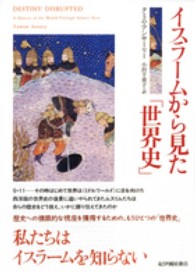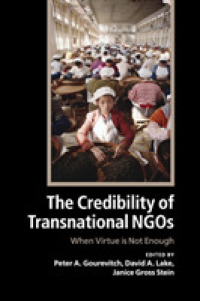- ホーム
- > 洋書
- > 英文書
- > History / World
基本説明
This book explains the Klan's appeal, its limitations, and the reasons for its rapid cultural and religious pluralism.
Full Description
In the 1920s, a revived Ku Klux Klan burst into prominence as a self-styled defender of American values, a magnet for white Protestant community formation, and a would-be force in state and national politics. But the hooded bubble burst at mid-decade, and the social movement that had attracted several million members and additional millions of sympathizers collapsed into insignificance. Since the 1990s, intensive community-based historical studies have reinterpreted the 1920s Klan. Rather than the violent, racist extremists of popular lore and current observation, 1920s Klansmen appear in these works as more mainstream figures. Sharing a restrictive American identity with most native-born white Protestants after World War I, hooded knights pursued fraternal fellowship, community activism, local reforms, and paid close attention to public education, law enforcement (especially Prohibition), and moral/sexual orthodoxy.
No recent general history of the 1920s Klan movement reflects these new perspectives on the Klan. One Hundred Percent American incorporates them while also highlighting the racial and religious intolerance, violent outbursts, and political ambition that aroused widespread opposition to the Invisible Empire. Balanced and comprehensive, One Hundred Percent American explains the Klan's appeal, its limitations, and the reasons for its rapid decline in a society confronting the reality of cultural and religious pluralism.
Contents
Preface
Chapter 1: The Klan in 1920s Society
Chapter 2: Building a White, Protestant Community
Chapter 3: Defining Americanism: White Supremacy and Anti-Catholicism
Chapter 4: Learning Americanism: The Klan and Public Schools
Chapter 5: Dry Americanism: Prohibition, Law, and Culture
Chapter 6: The Problem of Hooded Violence
Chapter 7: The Search for Political Influence and the Collapse of the Klan Movement
Chapter 8: Echoes
Afterword: Historians and the Klan








